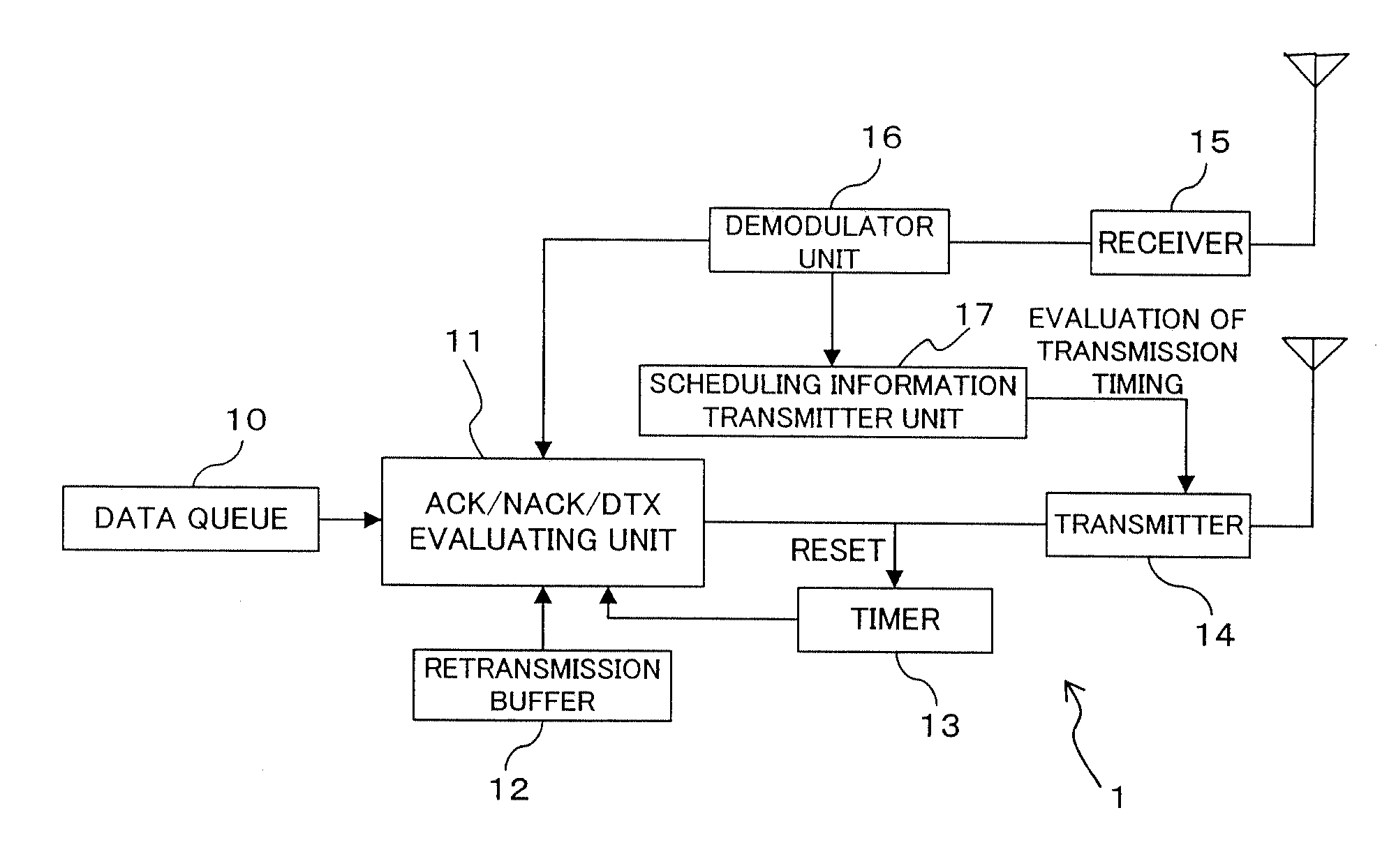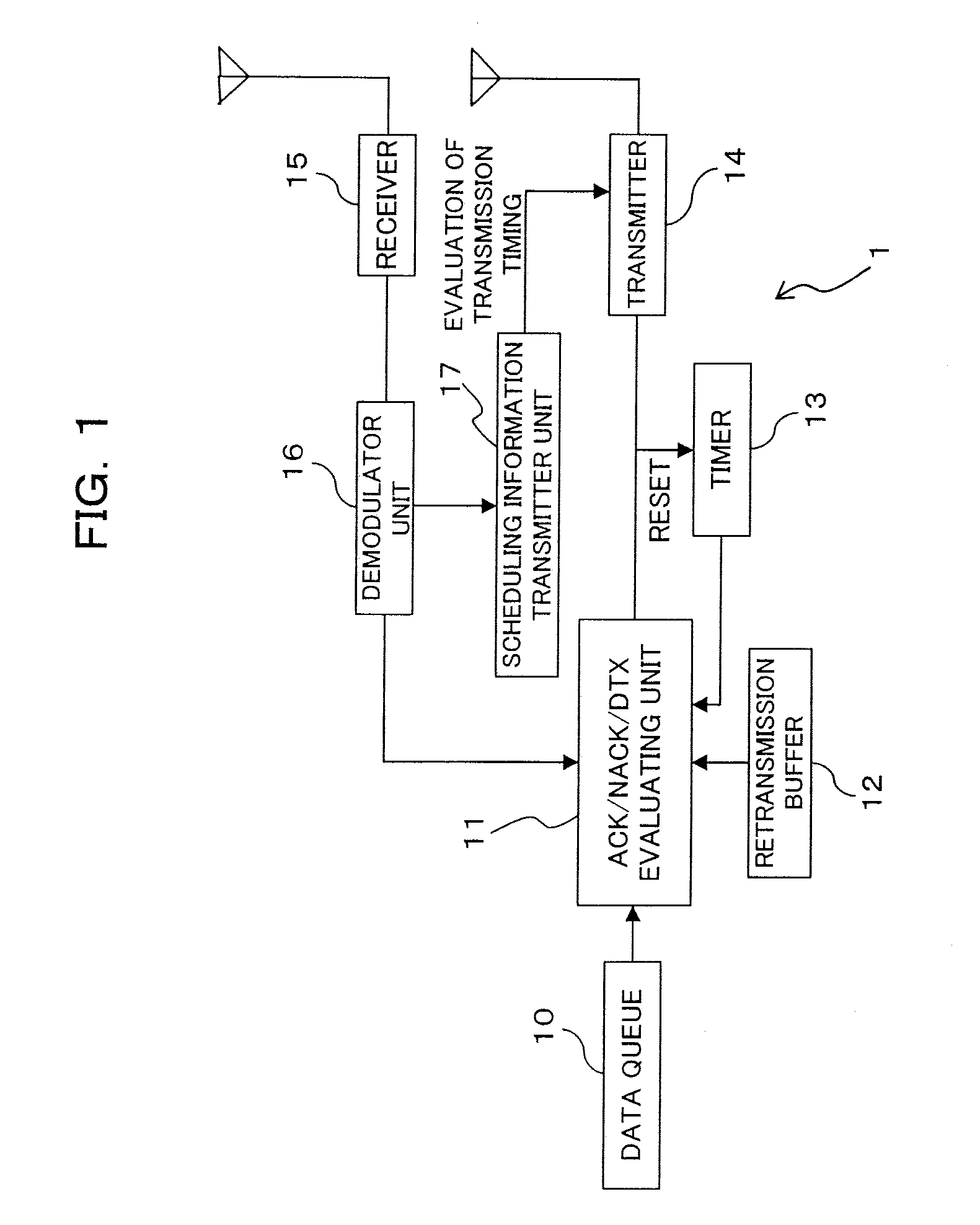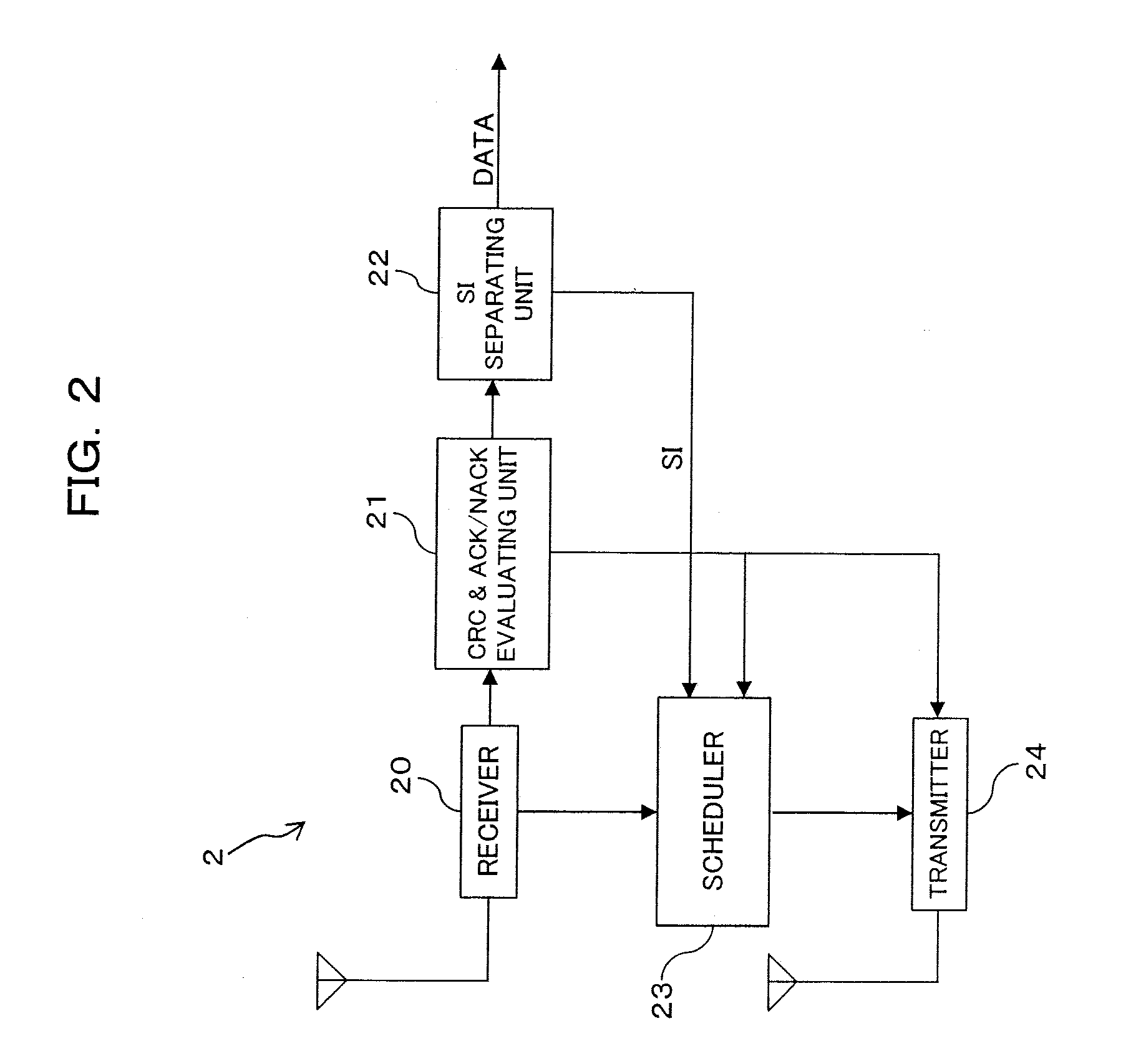Communication Method In Mobile Communication System, And Mobile Station And Base Station In The Same System
a communication system and mobile communication technology, applied in the field of communication methods in mobile communication systems and mobile stations and base stations in the same system, can solve the problems of delay between data transmission request on a terminal and actual data transmission, and become a considerable problem, so as to improve the throughput of uplink communication, reduce delay, and reduce the effect of delay
- Summary
- Abstract
- Description
- Claims
- Application Information
AI Technical Summary
Benefits of technology
Problems solved by technology
Method used
Image
Examples
first embodiment
(A) First Embodiment
[0049]FIG. 1 is a block diagram showing a construction of a radio mobile station, which is a constituent of a mobile communication system according to a first embodiment of the present invention; FIG. 2 is a block diagram showing a construction of a radio base station, which is a constituent of the same system. The radio mobile station (hereinafter will be simply called the “mobile station”) 1 in FIG. 1 accesses the radio base station (hereinafter will be simply called the “base station”) 2 in FIG. 2 by radio for establishing communication therebetween. Here, downlink communication, from the base station 2 to the mobile station 1, is performed, for example, based on the HSDPA scheme, and uplink communication, from the mobile station 1 to the base station 2, is performed, for example, based on the HSUPA scheme. The above mobile communication system includes one or more mobile stations 1 of FIG. 1 and one or more base stations 2 of FIG. 2.
[0050]As shown in FIG. 1, ...
second embodiment
(B1) Modified Example of Second Embodiment
[0073]In the foregoing second embodiment, it is possible for the base station 2 to notify the mobile station 1 of ACK / NACK with respect to uplink packet transmission from the mobile station 1 together with permission / non-permission for the following uplink transmission (transmission rate assignment permission / non-permission). More precisely, as shown in FIG. 10, the transmitter 24 is capable of generating a signal (data packet) in which transmission rate permission / non-permission information is added to ACK / NACK information to be transmitted to the mobile station 1 (step S14′ of FIG. 9).
[0074]In other words, the transmitter 24 functions as a reply information transmitter means for transmitting reply information (ACK / NACK), which indicates whether or not an uplink data packet has been normally received from the mobile station 1, to the mobile station 1. The scheduler 23 functions as a notification information adding means for adding transmiss...
third embodiment
(C) Third Embodiment
[0076]In the above embodiments, the base station 2 monitors (measures) an uplink communication state based on the amount of uplink traffic and the amount of interference. If the traffic amount or the interference amount is below a specific amount (reference value), each mobile station 1 is notified to that effect, thereby making it possible for each mobile station 1 to perform uplink transmission without prior permission of the base station 2.
[0077]That is, as shown in FIG. 11, the base station 2 monitors an uplink communication state based on the traffic amount and the interference amount (step S21), and evaluates whether or not the traffic amount and the interference amount are not greater than a specific amount (reference value) (step S22). If those amounts are not greater than the reference value, the base station 2 judges that the uplink communication state is good, and notifies each mobile station 1 that prior permission is not necessary before starting of ...
PUM
 Login to View More
Login to View More Abstract
Description
Claims
Application Information
 Login to View More
Login to View More - R&D
- Intellectual Property
- Life Sciences
- Materials
- Tech Scout
- Unparalleled Data Quality
- Higher Quality Content
- 60% Fewer Hallucinations
Browse by: Latest US Patents, China's latest patents, Technical Efficacy Thesaurus, Application Domain, Technology Topic, Popular Technical Reports.
© 2025 PatSnap. All rights reserved.Legal|Privacy policy|Modern Slavery Act Transparency Statement|Sitemap|About US| Contact US: help@patsnap.com



